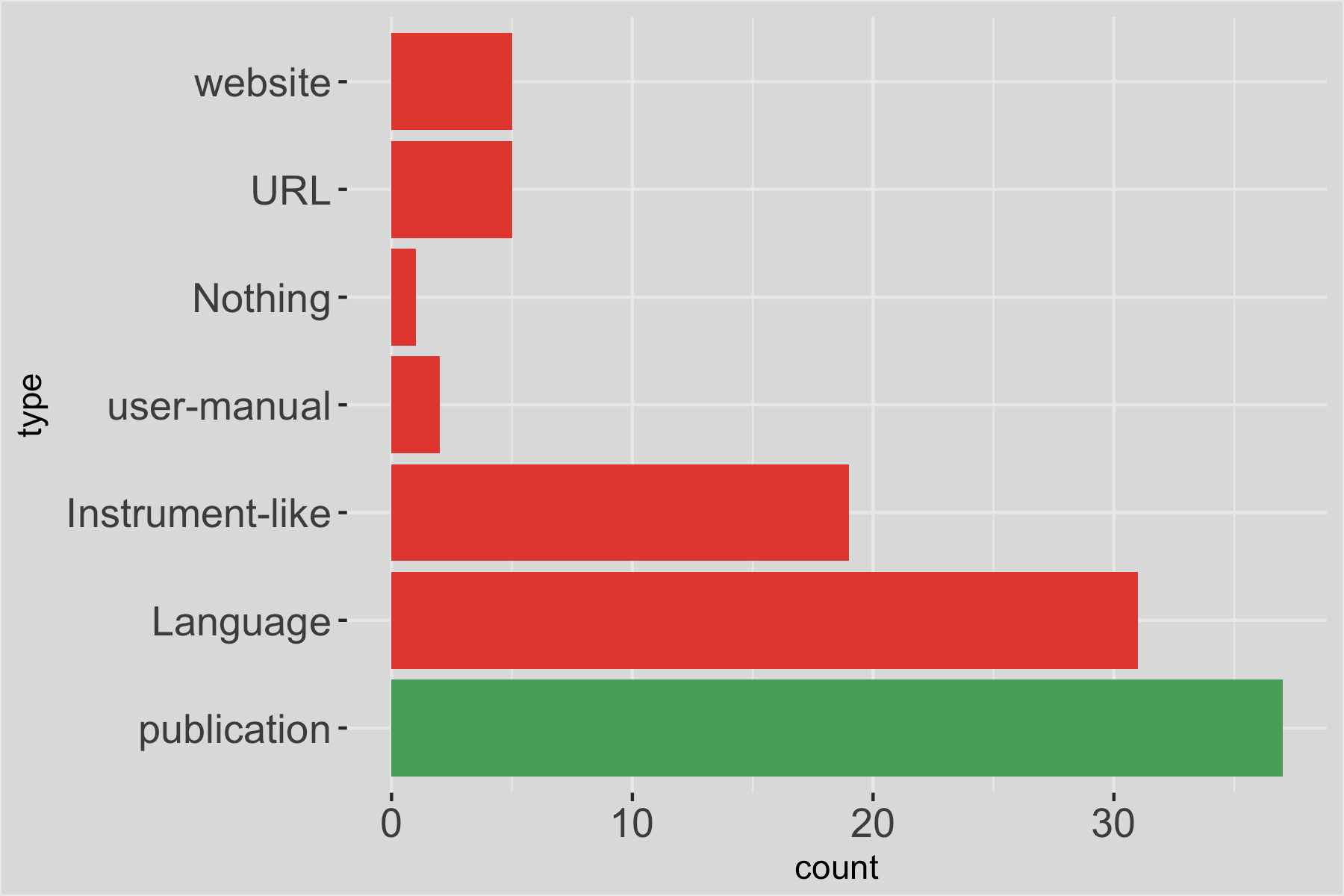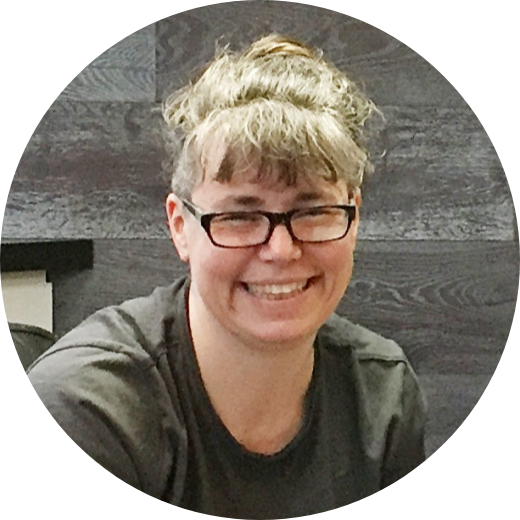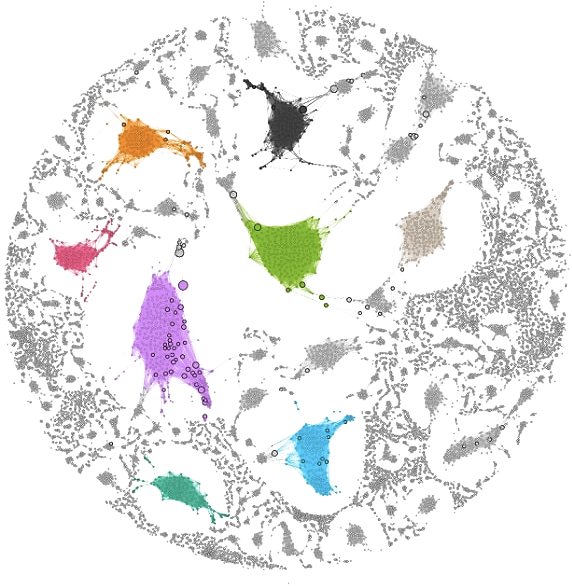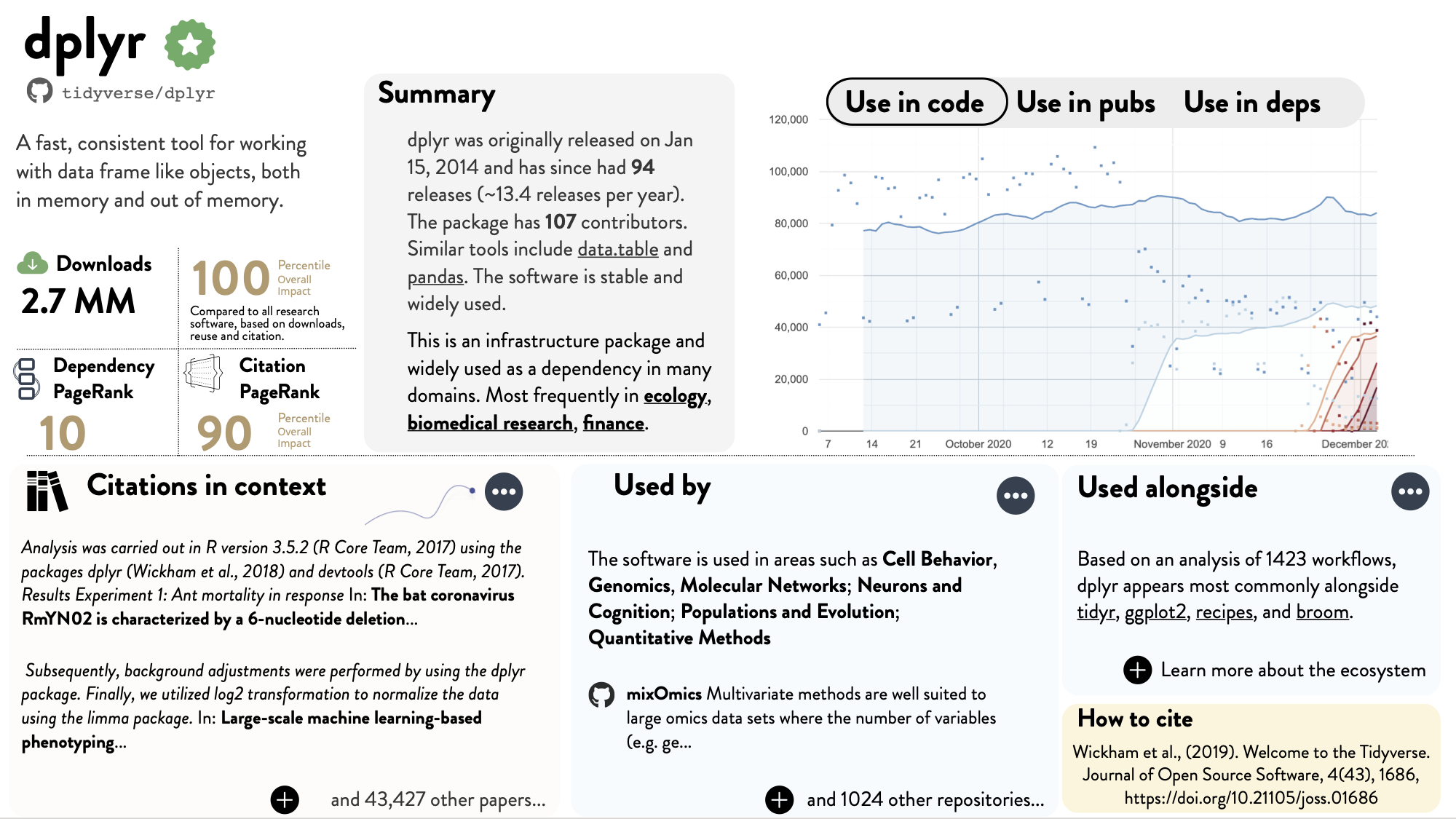Mapping the Research Software Ecosytem
bit.ly/eoss-swmap

Karthik Ram

James Howison
Use keyboard arrows or touch gestures to navigate slide deck
UC Berkeley
UT Austin
Research software isn't a creditable research activity

Howison & Bullard 2016
Formal citations: 31% - 43%
Informal mentions are the norm, even in high impact journals
Software is frequently inaccessible (15 - 29%)
Lack of visibility means that incentives to produce high-quality, widely shared, and collaboratively developed software are lacking
Prior work
Software Heritage
World of Code
Scientific Software Network Map
Transitive Credit
Depsy


Libraries.io






Heather Piwowar & Jason Priem
Andrew Nesbitt
Roberto di Cosmo
Chris Bogart
Jim Herbsleb
Daniel S. Katz & Arfon Smith
R-universe
func()
func()
func()
Workflow
Dependency
Git history
Informal mention in text
Informal mention in text
Paper
Paper text & metadata yield data on topic, field, software use
Package managers yield data on dependencies
Git repositories yield data on history of development
Time
Mapping the research software ecosystem

Which packages are increasingly used together in scientific workflows?
bit.ly/eoss-swmap-q1
How might the map assist with how you know and interact with your project’s upstream and downstream dependencies?
Can funding help make software more compatible?
1
What groups of interdependent software are increasingly important for scientific fields?
bit.ly/eoss-swmap-q2
How visible is their importance?
Can directed funding ensure the stability and maturity of critical dependencies and tool networks?
Does indirect usage do the work needed to demonstrate impact (with funders, with evaluators?)
2
Which software components are seeing use outside their areas of original development?
bit.ly/eoss-swmap-q3
Can funded interventions shore up interdisciplinary opportunities?
Are there “leading” and “lagging” fields? Can funded interventions bring lessons in achieving change within fields?
3
How can we assess the weaknesses and opportunities in the ecosystem? Can project health data (like the CHAOSS project) be integrated to highlight strengths and weaknesses?
bit.ly/eoss-swmap-q4
Which fields appear to be lagging? Can funded interventions bring lessons in achieving change?
4
Can visibility of interdependencies motivate industry to provide pro-bono support to those building software crucial to science?
bit.ly/eoss-swmap-q5
5
What else do you want to do at an ecosystem level that this wouldn’t help with?
bit.ly/eoss-swmap-q6
6
E.g., Might we learn about how different structures of dependencies (e.g., proper hierarchies, hour-glass structures) affect the efficient flow of limited labor in science for bug reports, fixes, and improvements?
Mapping the Research Software Ecosytem bit.ly/eoss-swmap Karthik Ram James Howison Use keyboard arrows or touch gestures to navigate slide deck UC Berkeley UT Austin
